#folk christianity
Text



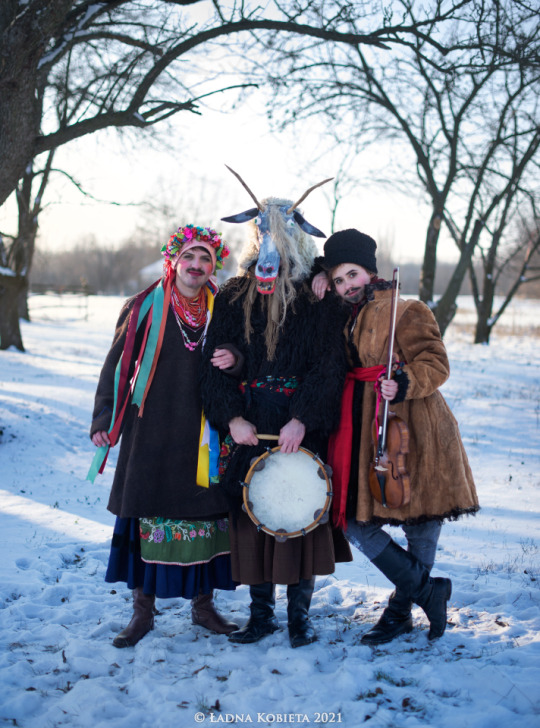

traditional cross-dressing on ukrainian malanka holiday. the woman is dressed as vasyl (folk adaptation of st. basil) and the man is dressed as malanka (folk adaptation of st. melania).
during this holiday, ukrainians honor the ancestral spirits and imitate them by dressing as animals and opposite genders, since it is believed that the otherworld blurs the line between male and female, as well as between man and beast.
photographed by anna senik (ładna kobieta)
#ukrainian folklore#ukrainian culture#folk christianity#ancestral veneration#ancestral worship#slavic folklore#ukraine#ethnography#malanka
4K notes
·
View notes
Text
Folk witch tip #2
Someone did you dirty but you don’t want to get down into the nitty-gritty? Instead of hexing or cursing, bless them.
Bless them to learn their lesson sooner rather than later. Trust me, life lessons hurt.
Ooooor, you can bless the people around them to see their true nature.
You’ll make them pay for sure ✨
#witchblr#witchcraft#witch community#witch#witches of tumblr#witches#folk witch#folk spellcraft#italian folk magic#folk witchcraft#folk christianity#folk catholicism#folk magic#baneful magic#magick#traditional witchcraft#spellcraft#spellwork#spellcasting#pagan witch#curses and hexes
585 notes
·
View notes
Text

from iwishyoucouldtakemeupstate on instagram
#christian blog#christianity#spirituality#catholic#christian faith#catholiscism#christian aesthetic#catholic aesthetic#catholic memes#christian memes#queer christian#christian witch#christopagan#christian mysticism#folk catholicism#folk christianity#our lady of sorrows#divine feminine
259 notes
·
View notes
Text
Your problems = your Patron
Parental issues- St. Eugene de Mazenod
Tired - St.Joseph
Mental illness - St. Dymphna
Victim of SA - St. Maria Goretti
Problems with sexual urges - St. Augustine
Loneliness - St. John the Apostale
Vision Problems - St. Lucy
Being ugly - St. Rose of Lima
Low grades - St. Joseph of Cupertino
Fealing far away from God - St. Mary
Financial issues - St. Joseph
Risky Situation - St. Katherine of Alexandria (pls lray to her for Motorcyclist!!)
Issues with your spouse - St. Valentine
Overeating - St Charles Borromeo
Undereating - St. Catherine of Sienna
Balding - St. Agnes of Rome
Being hexed - Saint Columba of Spain
#christian witch#christopagan#christopaganism#folk catholicism#christian witchcraft#christopagan witch#mother mary#theotokos#folk christianity
251 notes
·
View notes
Text
I'd love if people reblogged and tagged this poll with their answer, their religious identity (if any), and the type of magic they practice! No judgement for any particular answer, just genuinely curious.
#poll#folk magic#ancestral magic#witchblr#witch#folk witchcraft#traditional witchcraft#traditional witches#paganblr#witchy#witchery#southern folk magic#appalachian folk magic#occultism#occult#folk christianity#folk catholicism#reblog for bigger sample size#magic
126 notes
·
View notes
Text
My personal Alternative Hail Mary Prayer:
In Traditional Latin and English.
---english
Hail Mary, full of Grace.
Thy Devotees are with you.
Blessed art thou among Women, and Blessed is the fruit of your Womb.
Hail Mary, mother of all,
help us now,
and at the hour of our death,
Queen of Heaven guard us from harm.
----latin
Ave Maria, gratia plena, devotus tuus tecum .
Benedicta tu in mulieribus, et benedictus fructus ventris tui.
Ave Maria, Mater omnium nostrum,
adiuva nos nunc
et in hora mortis nostrae.
Regina caeli, ab iniuria nos custodi.
Hope someone has benefited from this knowing you can *change traditional Catholic prayers to fit Paganism, Gnosticism or Folk Catholicism!*
#blessed virgin mary#mother mary#folk catholicism#folk christianity#latinblr#our lady#mother goddess#god the mother#the blessed mother#mother of all#goddess religion#gnostic#gnosticism#pagan prayers#synchretic paganism#paganism#christopagan#christopaganism#catholic witch#mother god#great mother#hellenic paganism#pagan wicca#christian pagan#pagans of tumblr#paganblr#latin prayer#latin language#latin langblr#oceannotfound blogs
189 notes
·
View notes
Text
Looking for blogs to follow and or mutuals to discuss practices with !! I'm also open to exchanging discords!! :)) Anyone who posts original content about or practices;
• Luciferianism / Satanism / Demonolatry
• folk magic / folk Christianity
• death work / necromancy / vulture culture
• animism / nature spirits
• ancient Mesopotmanian polytheism
#death work#death magic#death witchcraft#witchcraft#occultism#necromancy#demonology#luciferianism#satanism#folk magic#folk christianity#witchblr#demonolatry#nature spirits
55 notes
·
View notes
Text
for my fellow witches who practice christian folk magic and use the rosary, I've written a special set of prayers for Palestine. Feel free to use and distribute this if you wish.

#witch#witchcraft#witchy#witchblr#traditional witches#traditional witch#traditional witchcraft#folk witch#folk witchcraft#folk practice#folk practitioner#christian folk witchcraft#christian folk practitioner#catholic folk magic#catholic folk witchcraft#catholic folk practitioner#prayer beads#rosary#rosary prayers#folk christianity#palestine#gaza#israel
34 notes
·
View notes
Text
I miss witchblr. Will you interact if you’re into:
ancestor veneration
folk Christianity
tarot
astrology
Celtic paganism
I want to follow you!
#witchblr#witchcraft#ceremonial magic#folk magic#folk christianity#tarot#astrology#ancestor veneration#celtic paganism
427 notes
·
View notes
Text
Then my Lord, He said unto me
"Do you like my garden so free?
You may live in this garden if you keep the people free
And I'll return in the cool of the day"
26 notes
·
View notes
Text
The Dionysos gallery (4)
We finally reach the end of this long Dionysos series - and after dissecting the myth of Dionysos, we reach the conclusion of this gallery, kindly offered by the French Museum of Wine (you can find it all here).
First, I will include there the various paintings I did not have enough space to add in previous post, two paintings coupled with an analysis section I will loosely translate.
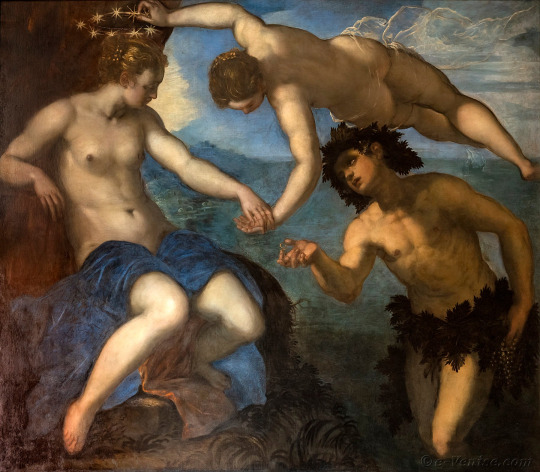
Le Tintoret's Ariadne, Venus and Bacchus
The motif of the encounter between Bacchus and Ariadne (who had been abandonned by Theseus on the island of Naxos) and Bacchus' offer to the woman of her famous gold crown made by Vulcan (according to Ovid's Fasts), has been a strong recurring motif in paintings, explored by numerous artists.
"Liber" or "Liber Pater" was originally a fertility/fecundity god whose worship took place within the oldest era of Ancient Rome. By the 7th century BCE onward Liber was associated with wine, and as a result the Romans ended up assimilating him with Bacchus/Dionysos. "Liber" as such became a mere Latin translation of the terms "Dionysos" or "Bacchus" - "Pater" meanwhile kept its role of expressing respect and adoration towards a god.

Jan van Bijlert's The Feast of the Gods
This 1630 painting currently kept at the Magnin Museum (Dijon) asks a quite troubling question: is this pagan scene... secretly a Christian Last Supper?
We are on Olympus. The gods are gathered for a feast. On the left we see Minerva, Diana, Mars and Venus, with Cupid by their side and Flora behind them. At the center of the table, a crowned Apollo appears holding his lyre. To the right we can recognize Hercules thanks to his mace, and Neptune with his trident. Unfortunately several of the Olympians are missing due to the painting having been cut off: for example there is a peacock, but no side of Juno. The motif of the "feast of the gods" was very popular in Holland, ever since an engraving by Goltzius "The Wedding of Psyche and Love" (see below).
However, van Bijlert's painting can be read very differently. In the Netherlands, due to the appearance and domination of Protestantism, all pictures had been banished from the temples, putting an end to the religious painting. As such, it seems that this painting hides within it a Christian scene of the Last Supper. Apollo at the center has the same halo as the Christ usualy has, and the characters surrounding him are twelve in total like the Apostles. Now, while it is a very interesting theory, we should stay careful. As we said before, it seems the reason some of the gods are missing is because the painting was cut (a practice very common at the time) - again, there's this peacock that implies Juno used to be included. Second element: yes the Christ has a golden halo in painting to symbolize his role as the Lord of the Heavens, but long before that, the idea of a halo of light did belong to Apollo. The Greeks saw him as the "solar god" by excellence, since he was the power that ruled and organized all things, and the one that regulated spirits and intelligences (in fact, he was complementary of Dionysos since Apollo tamed, controlled and shaped the vital force and bursts of life embodied by Dionysos).
Bijlert lived in Rome in the beginning of the 1620s and we know that, just like many of his fellow painters, he was deeply impressed by the art of Caravaggio. However, the Italian painter's fame was dwindling by then - and by the 1630s his art had lost any influence over European paintings. In this decade, Bijlert focused his works on the new international trend, the classicism. Here the composition of the panting and the diurnal luminosity are purely classicist. However, the dancing satyr and the leaning Bacchus on the foreground belong to the "naturalism" of Caravaggio: ocre-colored flesh, close-ups on bodies in non-conventional positions...
(Here is Goltzius' engraving)

Second part of this post, extending from the analysis above: Christianized Dionysos! Because yes, you might be surprised to learn that the motif of Dionysos/Bacchus in classical painting was heavily Christianized or syncretized with Christian figures...

Leonardo da Vinci's Saint John the Baptist
This Saint John the Baptiste has what has been called a "pagan beauty", and this painting with a Tuscany imagery "renews the syncretism of the patron of Florence" - perhaps due to the passion for Antiquity the town had when the painting was created. Indeed, while saint John here holds a cross symbolizing the Passion of the Christ, he is dressed in a panther's skin, reminding of the cloak of Bacchus...

Leonardo da Vinci's atelier: Saint John the Baptist-Bacchus
Once again this painting shows the syncretism between the figure of saint John and the character of Dionysos. The painting was first recorded, in the royal archives, as "Saint John in the desert". However, at the end of the 17th century, perhaps due to a restoration of the painting, the name was changed to "Bacchus in a landscape". Here we have Christian symbols: a finger raised to the sky, a stag resting on the ground... But we also have Bacchic attribute: a thyrsus, grapes, a panther's skin, and a crown of what might be ivy or vine-leaves.

Caravaggio's Saint John the Baptist
Here again we have the attributes of Bacchus: the vine, of which Bacchus was the god, and a ram, an animal traditionally sacrificed for the deity. Historians of painting are agreeing that the reason the Caravaggio associated John the Baptiste with Bacchus was because it allowed him to depict the saint naked, and eroticized, very probably to reflect his own homosexuality.
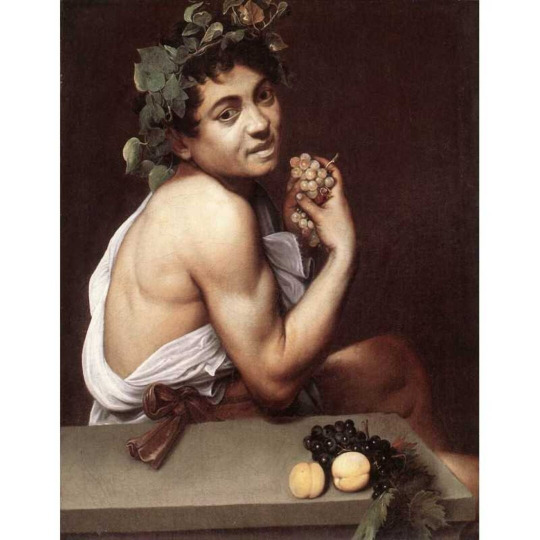
Caravaggio's "Sick young Bacchus/ The ill little Bachus"
This panting of Caravaggio has been interpreted as a self-portrait in a Bacchus-Christ fusion that is very sexual. Here, Caravaggio offers himself to the libertine cardinals of Rome, in an erotic "communion" (remember, "eucharis", means "the good flesh"). The action of carrying to his lips golden grapes gorged with juice is very sensual. Crowned with ivy, dressed in an ancient toga (which reveals a muscular shoulder), he is holding green grapes to his chest, as if he was about to press them. It has been thought that there the Greek wine of Dionysos is a mask or assimilation for the wine of the Christian mass - the invitation is for always a greater feast and bigger celebration, the wine of the Christ "subliming" the wine of Bacchus, ultimately becoming the wine an "universal mass" beyond any religion or era.
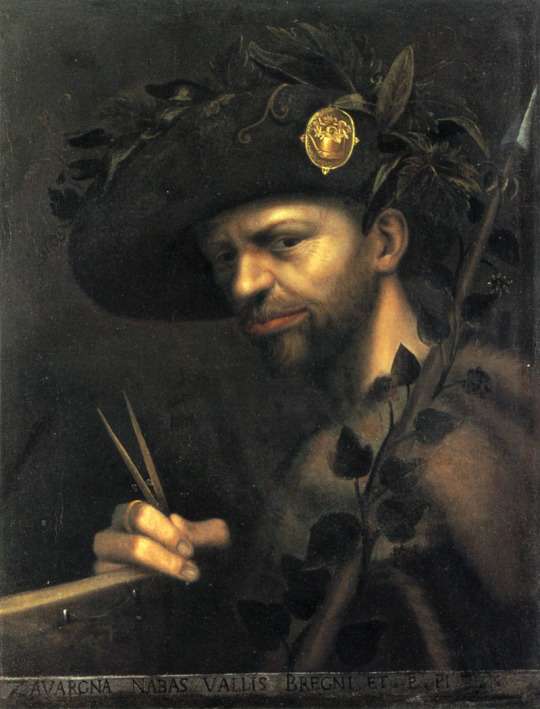
Giovanni Paolo Lomazzo's "Self portrait as a crowned Bacchus"
This painting depicts Giovanni Paolo Lomazzo in his outfit of president (called an "abbot") of the Acacademia della Val di Blenio (Ticino) - Lomazzo had just been named to this function, as the inscription at the bottom of the picture reminds the viewer. The Academy gathered all the best artists of Milan - painters, sculptors, musicians... And it was placed under the protection and patronage of Bacchus, the god that relieves from sorrows and worries, the god that inspires joy, the god that stimulates the mind and the creation, the god that frees from bondage. As such, it explains why this self-portrait has Lomazzo as Bacchus. It was an answer to the many disasters of the era, as well as to the new austerity imposed by the figures of the Counter-Reform - such as Charles Borromée, who was the archbishop of Milan and a cardinal within the Catholic church.
The Bacchic references are numerous here. The hat is wrapped in a garland of laurel and vine, with a medallion depicting vine too. There is a thyrsus surrounded in ivy. And finally there is a goat-skin, reminding of how when he was a child Bacchus was turned into a "kid" (baby goat) to avoid Juno's wrath. The compass however within the man's hand is not a symbol of Bacchus. Held like a paint-brush, it is meant to symbolize how Lomazzo "leads" and "drives" his own career like a captain would pilot his ship.
#the dionysos gallery#the art of the myth#dionysos#dionysus#bacchus#syncretism#saint john#john the baptist#art#painting#folk christianity#christian art
14 notes
·
View notes
Text
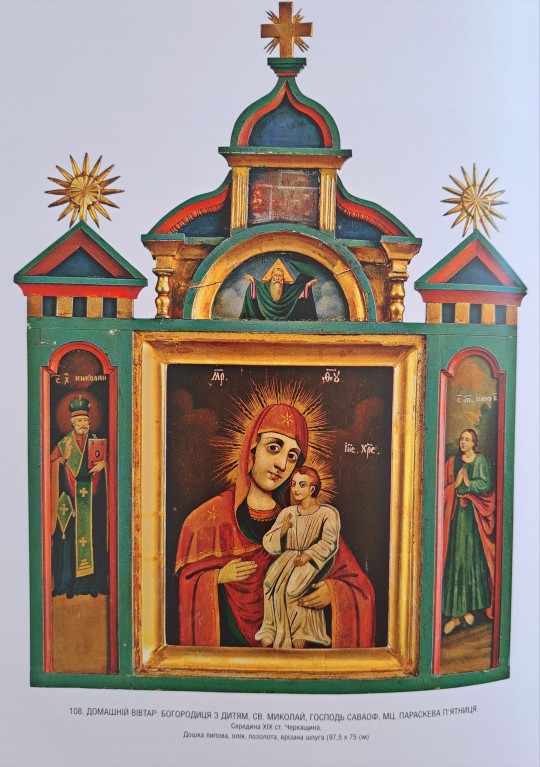





from "folk iconography of middle naddniprianshchyna in 18-20th century"
392 notes
·
View notes
Text
Folk Witch Tip #1
Just to be sure, double cleanse your place spiritually. just like we double cleanse our face at night or double wash our hair. I’m not talking about complex cleansing rituals, just pouring table salt on liminal spaces and saying a prayer while vacuuming is more than enough.
#witchblr#witchcraft#witch community#witch#witches of tumblr#witches#folk magic#folk witch#folk spellcraft#italian folk magic#folk witchcraft#folk christianity#folk catholicism#italian folklore#folklore#witch tips#traditional witchcraft#budget witchcraft#witchy tips
110 notes
·
View notes
Text

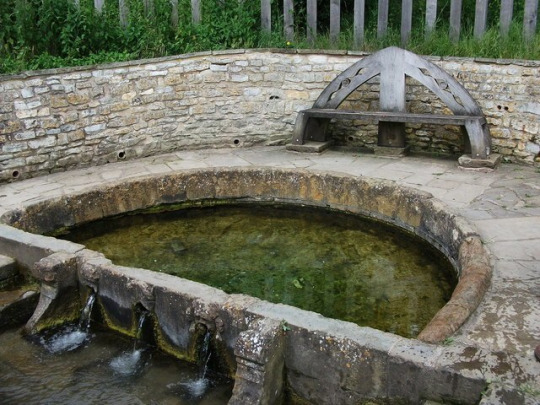
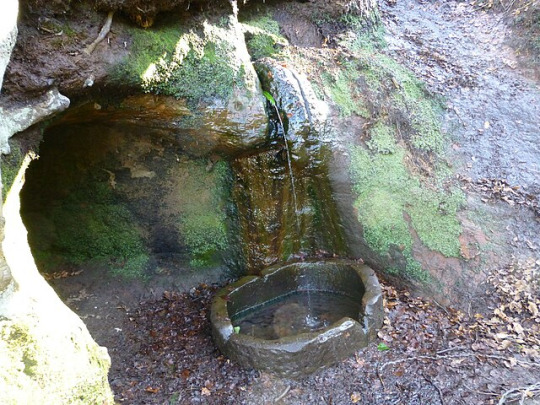

(x, x, x, x)
49 notes
·
View notes
Text
Ways to connect to Mother Mary
Drink Rose tea
Eat food with Rosemary
Brush your hair with a comb
Go a bit extra on the conditioner
Paint your nails red,gold & blue
Make devotional art
Grow a Plant for her (A Flower preferably)
Make some Crystal Jewerly
Connect with her Planet (shes a Virgo so do more Mercury magic)
Make a Beauty, Love or Confidence spell using Roses
Work with the Saints who work with her (exp St.Beatrice de Silva or Joan of Arc)
Decorate a Red Candle with Roses and Sunflower oil
Enchant your Jewerly
I associate Moonstone with her a lot. So leave that by your bedside table
Pray the Rosary (duh)
I like to Prostate while Praying. So you could get a Red and Blue or Pink Prayer Rug
Hope this helps ♡
#mother mary#christian witch#christopagan#christopaganism#christian witchcraft#folk catholicism#theotokos#blessed virgin mary#christopagan witch#folk christianity
153 notes
·
View notes
Text

my first money spell that i did under the hunter’s full moon!! 💸🌕🏹
the day after i finished my novena to st jude, i got an email and saw that i was granted financial aid for a school that i'm planning to transfer to!! a few days later, i found out that i got a scholarship for another school that i applied to (though unfortunately it was still too expensive for me 😔). but still, i got what i needed that’s all that matters!
thank you st jude for your help! i will forever be grateful for this blessing 💚🙏🏼
(and yes i know i’m using a christmas candle, it was the only green candle i had lying around 😂)
#witchcraft#witchblr#christian witch#christian witchcraft#folk magic#folk practice#folk catholicism#folk christianity#my stuff
30 notes
·
View notes